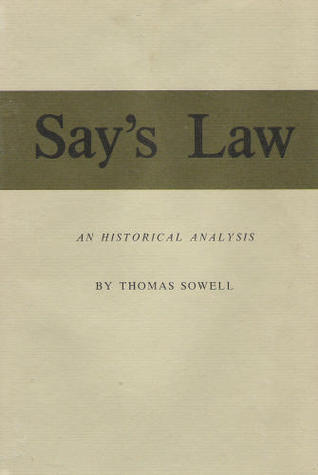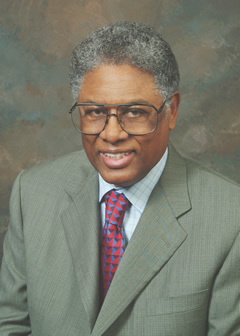
Say's Law―the idea that "supply creates its own demand"―has been a basic concept in economics for almost two centuries. Thomas Sowell traces its evolution as it emerged from successive controversies, particularly two of the most bitter and long lasting in the history of the discipline, the "general glut controversy" that reached a peak in the 1820s, and the Keynesian Revolution of the 1930s. These controversies not only involved almost every noted economist of the time but had repercussions on basic economic theory, methodology, and sociopolitical theory. This book, the first comprehensive coverage of the subject, will be an indispensable addition to the history of economic thought. It is also relevant to all social sciences concerned with economic prosperity, with the nature of intellectual orthodoxy and insurgency, or with the complex relationships among ideology, concepts, and policies. Originally published in 1972. The Princeton Legacy Library uses the latest print-on-demand technology to again make available previously out-of-print books from the distinguished backlist of Princeton University Press. These editions preserve the original texts of these important books while presenting them in durable paperback and hardcover editions. The goal of the Princeton Legacy Library is to vastly increase access to the rich scholarly heritage found in the thousands of books published by Princeton University Press since its founding in 1905.
Author

Thomas Sowell is an American economist, social commentator, and author of dozens of books. He often writes from an economically laissez-faire perspective. He is currently a senior fellow of the Hoover Institution at Stanford University. In 1990, he won the Francis Boyer Award, presented by the American Enterprise Institute. In 2002 he was awarded the National Humanities Medal for prolific scholarship melding history, economics, and political science. Sowell was born in North Carolina, where, he recounted in his autobiography, A Personal Odyssey, his encounters with Caucasians were so limited he didn't believe that "yellow" was a hair color. He moved to Harlem, New York City with his mother's sister (whom he believed was his mother); his father had died before he was born. Sowell went to Stuyvesant High School, but dropped out at 17 because of financial difficulties and a deteriorating home environment. He worked at various jobs to support himself, including in a machine shop and as a delivery man for Western Union. He applied to enter the Civil Service and was eventually accepted, moving to Washington DC. He was drafted in 1951, during the Korean War, and assigned to the US Marine Corps. Due to prior experience in photography, he worked in a photography unit. After his discharge, Sowell passed the GED examination and enrolled at Howard University. He transfered to Harvard University, where he graduated magna cum laude with a Bachelor of Arts degree in Economics. He received a Master of Arts in Economics from Columbia University, and a Doctor of Philosophy in Economics from the University of Chicago. Sowell initially chose Columbia University because he wanted to study under George Stigler. After arriving at Columbia and learning that Stigler had moved to Chicago, he followed him there. Sowell has taught Economics at Howard University, Cornell University, Brandeis University, and UCLA. Since 1980 he has been a Senior Fellow of the Hoover Institution at Stanford University, where he holds a fellowship named after Rose and Milton Friedman.